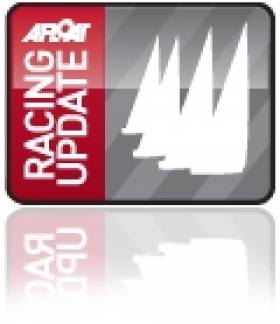Displaying items by tag: Dinghy Champions
Dinghy Champions head to Burnham-on-Crouch for 50th Endeavour Trophy
A strong line-up of competitors is preparing to do battle at this weekend's 50th Endeavour Trophy event at Burnham-on-Crouch in the UK.
To mark the half century of this annual dinghy Champion of Champions event, the host club – the Royal Corinthian Yacht Club – has extended the regatta to run over three days (1-3 October) and, as well as inviting current dinghy class champions, has also invited former Endeavour champions to race a Masters' Championship on the Sunday afternoon immediately following the concluding races of the 2010 Endeavour Trophy series. The grand Endeavour dinner on the Saturday night also promises to be one of the best yet with over 130 tickets sold so far.
This historic annual event, which was first held in 1961, is invitation only to determine the overall dinghy champion of champions from the UK's most popular dinghy racing classes. But to ensure the event is made as fair as possible – to provide for the diverse entry including solo, double-handed, heavy and lightweight crews – racing takes place in carefully selected, strict one-designs.
Owing to the success of the last five years, the Ian Howlett-designed Topper Xenon is the chosen class once again. Not only does this particular design offer an ideal all-up crew weight range of between 18-24 stone (114-152 kilos), but also because it's a relatively new design and has no class championship, there is no class champion to gain an unfair advantage.
Topper, who have specifically built and kindly loaned the fleet of 30 brand-new Xenons for the event, have been working closely with Hyde who are supplying sails, and Allen Brothers the fittings. Together they have been able to produce an 'Endeavour boat' that is arguably the most fair choice of class in the history of the event.
Because the Endeavour Trophy is, and has always been, recognised as the pinnacle of the year's dinghy sailing achievements, the quality of entry is exceptionally high and the competition extremely hot. The special 50th anniversary Masters' championship on the Sunday will also add to the flavour of the event particularly with the likes of former champions Keith Musto, Nick Martin, Chips Howard, Ian Southworth, David Hayes, Mike Holmes, Alan Gillard, Steve Tylecote, Mike McNamara, Nick Craig, and last year's winner Geoff Carveth already signed up. Racing for this event will take place off the club, giving spectators the opportunity to really see the masters at work.
The race programme for the 50th Anniversary Endeavour Trophy for 2010 champions starts on Friday 1 October with the first race of the eight-race series kicking off at 1525. The series continues all day Saturday, with the 50th Endeavour Trophy dinner taking place at the club that evening. The final race of the Endeavour Trophy concludes on Sunday morning, and the Masters' championship will start at 1400. The prizegiving for both events will take place as soon as possible after the last race.
Endeavour Trophy 2010 entries
Class Helmsman and crew
B14 Tim Harrison and Jonny Ratcliffe
Blaze Rob Jones and Ian Clark
Cadet Andrew and Christopher Smith
Enterprise Nick Craig and Toby Lewis
Fireball Chips Howarth and Simon Potts
Firefly Ben Vines and Eddie Webb
420 Phil Sparks
GP14 Ian Dobson and Andy Tunnicliffe
Hornet Richard Garry and James Beer
Lark Harry Pynn and Michael John Gifford
Laser 2000 Jasper Barnham
Laser 4000 Alistair Hodgson and Sue Ogg
Merlin Rocket Stuart Bithell and Christian Birrel
Mirror Chris Rust and Ollie Newman
Musto Skiff Bruce Keen and Penny Clark
National 12 Graham Camm and Zoe Ballantyne
Osprey Gareth Cauldwell and Robin Toozs-Hobson
Pico Jack Lawson
RS Feva Robert Baddeley and James Taylor
RS200 Dave and Jane Hivey
RS300 Steve Bolland and Pete Cruickshank
RS500 Tim Wilkins and Michiel Geerling
RS600 Jamie Mawson and Chris Fry
RS700 John Heissig and Nicky Griffin
Scorpion David Wade and Steve Hall
Solo Matt Howard and Luke Patience
Topper Edward Jones and Hector Simpson
29er David Conlon and Fin Anderson
Vortex Phil Whitehead and Jonathan Lister
Wayfarer Michael McNamara
Brief history of the Endeavour Trophy
The Endeavour Trophy is a solid silver scale model of the 'J' Class yacht Endeavour presented annually to the Champion of Champions at the Royal Corinthian Yacht Club, Burnham-on-Crouch.
The origin of the trophy stems from Tommy Sopwith's 'J' Class yacht Endeavour, America's Cup Challenge in 1934. Following a pay dispute and dismissal of his East coast-based professional crew, Sopwith enlisted the help of 'Tiny' Mitchell, the Commodore of the Royal Corinthian Yacht Club at the time, to recruit amateur members of the club to form a crew.
Although Endeavour won the first two races against Rainbow and lost the series, this was the closest England has ever got to winning the coveted America's Cup.
Years later, Robin Judah respected member of the RCYC was anxious to establish a series of races for dinghy sailors in order to discover the 'Champion of Champions'. Beecher Moore, former Endeavour crew, and marketing man behind the successful dinghy designer Jack Holt, joined Judah in his quest to run this event and presented for the overall winner, his solid silver scale model of the yacht.
The first invitation-only race took place in 1961 and the winner was Peter Bateman, representing the International Cadet Class, crewed by Keith Musto. The original idea was to use the club's own fleet of 15 Royal Corinthian One-Designs but they were considered too specialist and would have placed a perpetual limit on the number of entries. Since then the event has been sailed numerous classes including the GP 14s, Laser 2s, Larks, Enterprises, RS400s and now the Topper Xenon.
For results visit: www.royalcorinthian.co.uk/endeavour-championship





























































